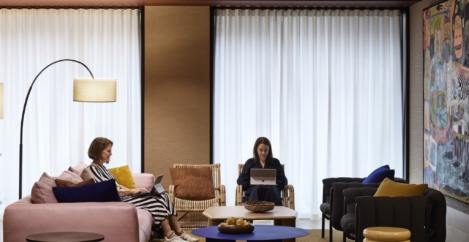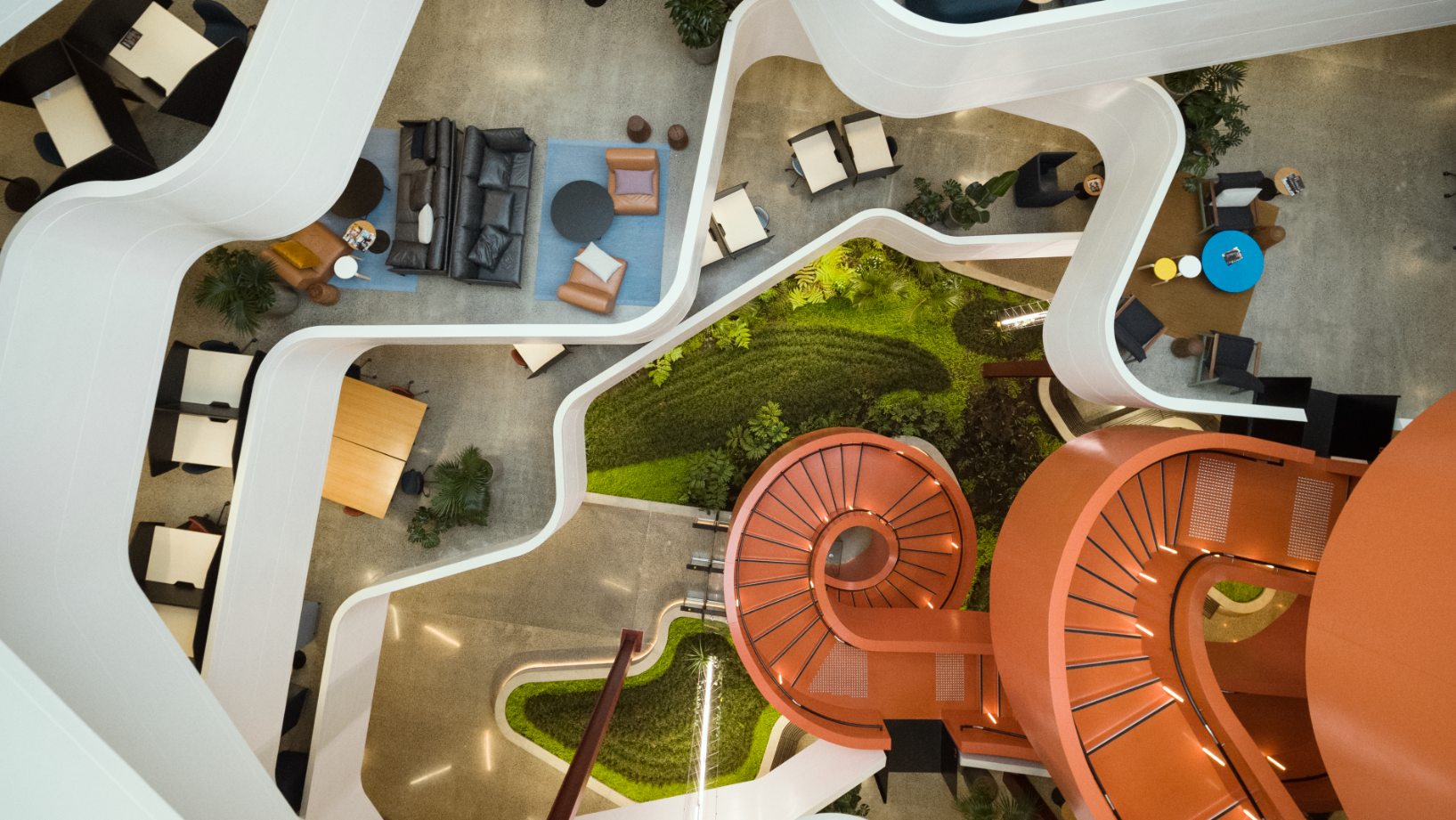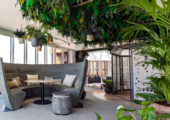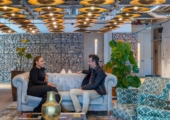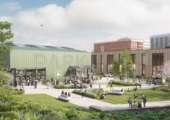May 1, 2024
Hybrid working era means a boom time for workplace apps
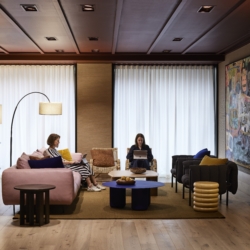 Disseminating information about a building to the people who occupy it has come a long way from a basic, intranet desktop interface with warnings about wet floors or notices about charity fundraising. These days apps promise a much more sophisticated workplace experience, which can be accessed in the palm of your hand. Gartner has a useful definition of workplace apps’ capabilities, stating, “They are used to explore and reserve workspaces, navigate the workplace, find colleagues, plan the best days to attend the workplace, access services and ensure that employees could feel safe in a future post pandemic workplace.”
Disseminating information about a building to the people who occupy it has come a long way from a basic, intranet desktop interface with warnings about wet floors or notices about charity fundraising. These days apps promise a much more sophisticated workplace experience, which can be accessed in the palm of your hand. Gartner has a useful definition of workplace apps’ capabilities, stating, “They are used to explore and reserve workspaces, navigate the workplace, find colleagues, plan the best days to attend the workplace, access services and ensure that employees could feel safe in a future post pandemic workplace.”
It’s a growth area too. Apps are part of the smart workplace market, which according to Smart Workplace Global Market Report is predicted to grow from $40.91 billion in 2023 to $45.34 billion in 2024 all in the name of, “optimising office environments, enhancing productivity and improving the overall working experience for employees.”
They create that nexus of the physical and digital, where people and buildings converge and done well, can add that extra layer of interaction between employees and employers and between landlords and tenants. But much like with social media, with greater communication and openness comes fears about things like privacy.
In line with the ‘flight to quality’ in terms of office space Felicity Ranger, Office Leasing Manager, Stratford Cross with developer Lendlease puts it “Businesses also increasingly want spaces that align with their own positioning and values. Signing a lease on a tech-enabled building tells their teams and customers that they are forward thinking and keeping pace with the rest of the market.”
Maciej Markowski is currently CEO of SquarePlan, an AI proptech startup automating space planning and cost estimations. He is ex-founder and CEO of a global proptech firm spaceOS (which was acquired by Equiem) with decades’ worth of real estate and workplace strategy experience. He gives some recent points to the “rise of the coworking where you pay your own way and if you don’t feel you are in a good building you are able to leave with a six, three or one month contract” as going some way towards a shift in thinking by landlords and asset managers in thinking not just about the yield of a business but also the satisfaction of the people working in a building. Just as people are familiar with using the likes of UberEats to have food delivered to their door or reporting a problem with their Amazon package within a few clicks, so it should be as easy to access services from maintenance issues to what’s on the menu in the in-house catering offer, as well as being able to book a meeting room and see when and where colleagues are in the office.
When it comes to whether these types of apps are helpful to the hybrid model Dr Kerstin Sailer, Professor in the Sociology of Architecture at University College London says, “The answer is it depends, For some people, coming in to the office is important for team spirit and close collaboration, huddling around a whiteboard to generate ideas. If people are focussing too much on inside team connections, you can be creating silos, which you don’t want. Ideally you see a mix of people and people are creatures of habit – you have your Tuesday crew and your Thursday crew but if you’re not part of the Wednesday crew, you might never meet the people who come in to the office then. Most often, you’ll know who’s in the office, sometimes people will put a status message on Teams, Slack or another platform. I’m a little sceptical of the kind of technology and the apps and the over usage of design functions for problems that don’t exist.”
Sailer, who recently published an academic paper on hybrid working adds that there is absolutely room for “digital dashboards for when you have activity based working in a large organisation and you want to find someone. Or for those seeking quiet space, which might be people seeking an area for concentrated work or a confidential conversation.” She adds that this would empower those who are neurodivergent who can find quiet areas to work and “enabling diversity and meeting the needs of those with health conditions, disabilities or caring commitments.”
Peter Ankerstjerne, chief strategy officer with software firm Planon agrees on tech’s role in making work life easier for the non-neurotypical, saying, “The technology available can accommodate neurodiversity so that everyone can work effectively, whether that’s at home or in the office.”
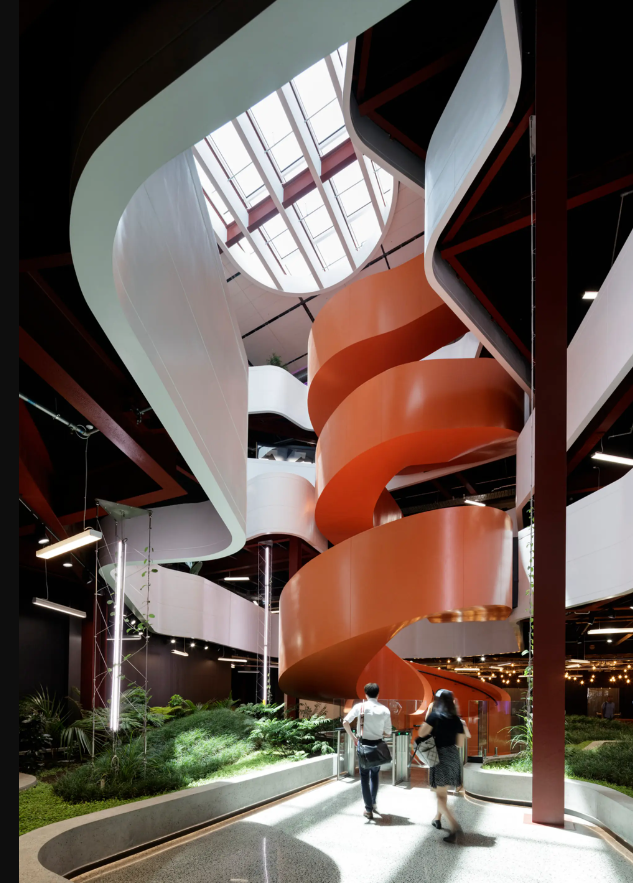 His colleague, Planon’s product strategy and innovation officer Erik Jaspers adds, “There are different elements to supporting users in the workplace. Mobile is one, desktop is another. What we can do in our approach is when you’re in Outlook and you’re looking for space, we directly link up availability. From a mobile it’s possible to complete bookings for all sort of things from meeting rooms to fitness training sessions to parking to maintenance issues such as the elevator being broken.”
His colleague, Planon’s product strategy and innovation officer Erik Jaspers adds, “There are different elements to supporting users in the workplace. Mobile is one, desktop is another. What we can do in our approach is when you’re in Outlook and you’re looking for space, we directly link up availability. From a mobile it’s possible to complete bookings for all sort of things from meeting rooms to fitness training sessions to parking to maintenance issues such as the elevator being broken.”
“When the definition of workplace is changing, we’ve been looking at investing in the digitalisation of services using a multi-modal approach so you can experience the workplace in a digital or physical way. From an employer’s point of view it’s a wider discussion of a number of issues from maintenance to occupancy and at Planon it’s how these things fit together so we can create software to achieve transparency to make business decisions. These don’t just relate to what the cost is but also the satisfaction of employees, their engagement, decisions around downsizing if space isn’t being utilised and what the impact on employee experience will be.
From the employer side, he adds decisions like shutting off floors at certain times of the week e.g. Fridays or ordering less food for the canteen can also have positive sustainability impacts – reducing food waste or energy costs – but this has to be balanced with the satisfaction levels for the people who are coming in the office.
Increasingly, It’s not just about the four walls of the building either, as Felicity Ranger continues, “Our conversations with potential tenants – from universities to tech brands and start-ups – tell us that the place around an office and how that acts as a draw for teams has become just as important as the building itself. Apps and technology are a big part of that and how teams can be embedded in their local areas and benefit from the destination around them. Explore Stratford Cross is our complimentary app for all of our occupiers that connects their teams with everything that is on their doorstep, including restaurants, shops and events. We’ll be bolstering the Explore Stratford Cross platform with dedicated add-ons for individual buildings, including our landmark Turing Building that launches this summer. It means teams will be able to move seamlessly between spotting a discount for lunch, to signing up for sunrise yoga on the roof and booking a meeting room.”
Avison Young’s Emma Parkin Is based on site at Portsmouth Lakeside, for the global real estate firm’s client Portsmouth City Council. The development is using Equiem, a platform which connects tenants and landlords in office buildings, as a platform for their desktop and mobile app My Lakeside. She says, “We currently have over 1,600 users registered, after the first year, accounting for around 60% of its current occupancy. These figures speak volumes about the campus and its business community engagement.
Among the issues to address with apps Emma Parkin adds, “Adoption is a big challenge, as people are hesitant to add another app to their phones, which is why we also offer a desktop version. Keeping people on the app and ensuring regular engagement, by producing relevant and high-quality content is key. Adoption of apps should improve, Equiem continue to introduce more functionalities for ‘My Lakeside.’ We hope to be able to offer occupiers unique passes and badges in the future. We want to continue to deliver an app that is useful to for everyone at Lakeside . There are ae lot of apps already out there and this sector continues to . Apps need to be beneficial to the user and to be relevant to maintain the rate of adoption and engagement.”
Maciej Markowski points to the changing role of facility management in the roll out of apps as something else to consider. Historically this discipline had been more reactive but with the rise of workplace experience at the tap of a screen, this has meant the FM community has had to become much more proactive and the KPIs much more creative, not something those in the profession had necessarily signed up to when they started ten, twenty or more years ago.
Esme Banks Marr, strategy director with BVN Architecture meanwhile says interaction with apps of this kind often fails the ‘toothbrush test’: will you use twice a day without fail” She thinks that integration of services in one place is not as far advanced as it could be “It’s never a single pane of glass,” coupled with an assumption that everyone’s level of enthusiasm and experience of interacting with apps is the same when the reality is a workforce could have a spectrum of relationships with tech.
Privacy is an area where Kerstin Sailer has some concerns. “There’s a tendency for a lot of people to prefer to use this type of technology in a desktop browser – in an app if you look into the Ts and Cs users sometimes have to give away a lot of information from access to private photos to reading your emails to location information. Someone needs to develop the next iteration of apps and ask some crucial questions about why do we need to do this and is it in the best interests of the users.” She adds that people will vote with their feet – or should that be their index fingers – in simply not downloading the app in the first place.
“There’s this assumption you’ll be enchanted by an automated, smart building when you walk in when it’s actually quite creepy. You don’t want to engage with a building as if it’s your best friend. Just as one of my frustrations is how architecture ignores the user, seeing it as a distraction from the aesthetics of building so I would like to see more critical user engagement, if you listen to the apostles of tech, this is swept under the carpet. I would like to see more research to follow up what users do and how this tech solves their problems, as often it’s developed top down and not validated bottom up and solving problems that are not there.”
As in so many areas of tech, the possibilities of AI are interesting as Amrit Sandhar, employee expert and CEO of engagement consultants & Evolve lays out.” Many workplace apps have yet to embrace all the AI has to offer. Imagine a workplace assistant that knows your work routines, and can anticipate your needs, such as when you need a break, where you like to get a coffee from, ordering it ready for you, arranging lunch, planning diaries and sourcing what you may need. Current workplace apps push out information; the future of workplace apps will be to integrate into our lives and help reduce or remove the administrative tasks that we spend so much time on.”
Felicity Ranger sums up the situation finally, “The key is making it easy for users to pick up and putting everything in one place for them – like a little holiday rep in everyone’s pocket to help them get the most out of their visit.”

Helen Parton is an internationally renowned writer, commentator, curator and editorial consultant within the design, architecture and built environment sectors.
This article first appeared in issue 20 of IN Magazine




